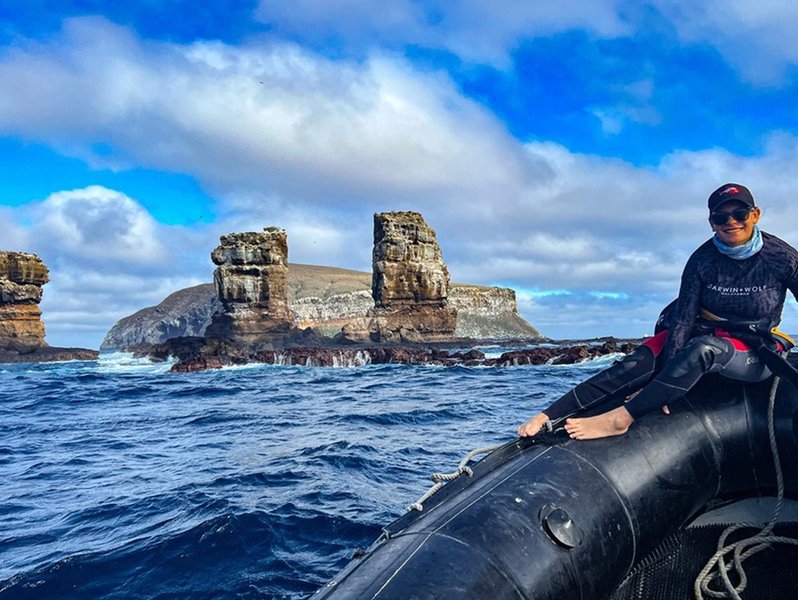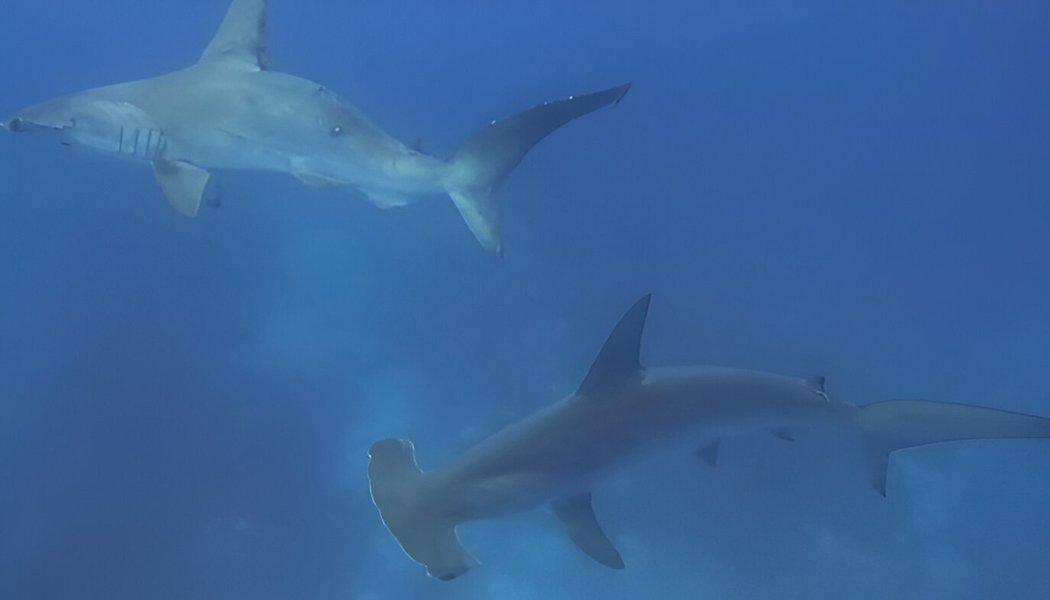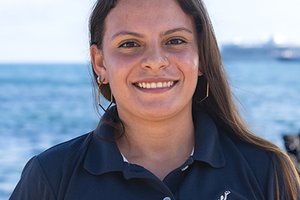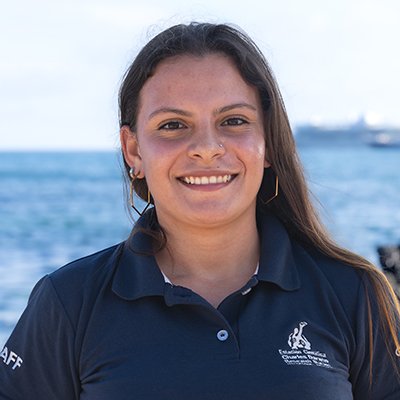The sun sets on the horizon, reminding me that each day is a chance to learn from the sea. In its stillness, I realized that science is measured not only in data, but also in emotions. This is the story of an encounter that changed me.
I sit by the sea, watching the sunset. The shadows reflect the path I’ve traveled and all that I still have left to discover.
My name is Erika Andrea De la Cruz Macías, and I am a resident of the Galápagos. Since childhood, the ocean and its magnificent marine life have fascinated and inspired me. I began studying biology, and midway through my studies, I had the opportunity to volunteer at the Galápagos National Park Directorate, working with sea turtles. That was the first step on a long journey.
After finishing high school, I made one of the hardest decisions of my life: to leave home and be away from my family in order to grow both professionally and personally. But my compass always pointed to the same place—the Enchanted Islands. I returned to Galápagos with a clear goal—but also a mix of fear and excitement: to volunteer with the Charles Darwin Foundation’s Shark Ecology Project.
That year was intense—full of challenges, learning, and adventures. I took part in fieldwork in magical corners of the archipelago. I decided to get certified as an advanced diver, an essential requirement for conducting research in places like Darwin and Wolf Islands, which host one of the world’s largest shark aggregations. All of this not only strengthened my skills as a marine biologist but also reaffirmed my commitment to conserving the unique ecosystems of Galápagos.

An Ordinary Day, an Extraordinary Discovery
On May 7, 2024, I asked for permission to take my final exam for the Advanced Open Water Diver course. The course included two dives, which I successfully completed—but during the second dive, something happened that I will never forget.
As I opened my eyes underwater, there they were: two hammerhead sharks. Majestic, imposing… but one of them moved differently—slower, more awkward. Something caught my attention. It wasn’t fear—it was scientific intuition. I carefully approached and noticed the unthinkable: its body wasn’t straight. It had lacerations, and its spine appeared curved. That moment marked the beginning of an unexpected investigation.
Back at the office, I decided to document what I had observed. This led to a brief scientific report that now represents the first record of scoliosis in a free-swimming hammerhead shark in the wild.
A Hammerhead Shark with Scoliosis:
An Unprecedented Observation in Galápagos
What is scoliosis and why does it matter?
Scoliosis is an abnormal curvature of the spine. Although it has been documented in fish and in captive sharks, this is the first case observed in a wild hammerhead shark in Galápagos. This observation provides a unique opportunity to understand how such deformities affect mobility, behavior, and survival in a natural environment.
What could have caused the deformity?
There are several hypotheses for this case, including:
- A failed attack by a predator such as an orca
- Injuries during fishing or collisions with boats
- Congenital malformations
- Aggressive reproductive behavior
- Marine pollution or parasitic infections
The presence of circular wounds at various stages of healing supports some of these possibilities, but it is difficult to confirm a definitive cause.
How has this shark survived?
Thanks to the Galápagos Marine Reserve—with its abundance of prey and protection from industrial fishing—this shark has likely been able to continue surviving despite its limitations.
Why is this finding important?
Most studies on deformities have been conducted on deceased or captive animals. This case provides a rare insight from the wild. Understanding how these conditions affect vulnerable species like the hammerhead shark helps us design better conservation and management strategies.


That underwater encounter revealed more than a deformity—it showed me that even in imperfection, nature finds a way to carry on. And it reminded me why I chose this path: to observe, understand, and protect what is not always visible at first glance.
The article was published in the open-access scientific journal Environmental Biology of Fishes and is available at this link: https://link.springer.com/article/10.1007/s10641-025-01698-4
You Can Be Part of the Change Too
Erika’s encounter with a hammerhead shark marked the beginning of a story of science and conservation that is still being written.
You can be part of this story too.
- Learn more about the Shark Ecology Project of the Charles Darwin Foundation.
- Symbolically adopt a shark and contribute directly to the protection of these incredible ocean guardians.






